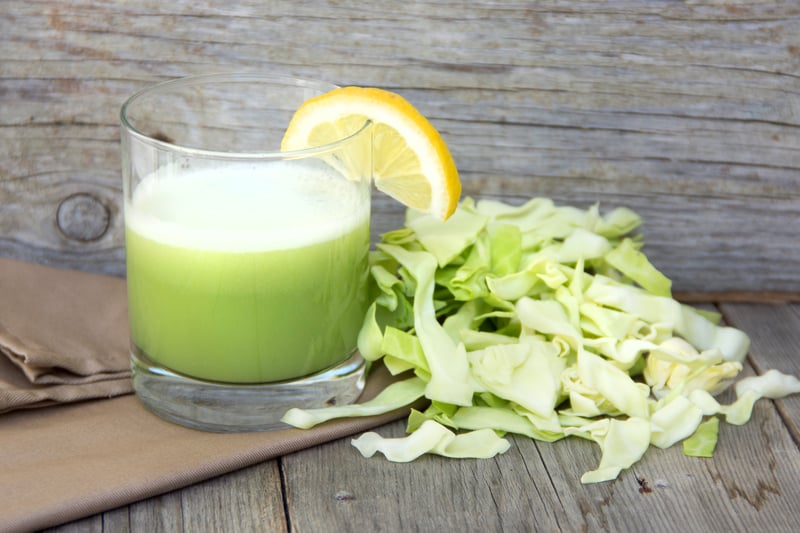Vitamin U: What Is It, Usages, Sources + Benefits

Did you read the title, and think, “Vitamin U? What’s that?” You’re not alone. While the term “vitamin U” has been around since the 1950s, it hasn’t made it into the mainstream. In fact, vitamin U isn’t even a vitamin. Rather, it’s a compound derived from methionine, an amino acid. Other names include S-methylmethione (SMM), methylmethionine sulfonium (SMM), 3-amino-3-carboxypropyl dimethylsulfonium, and the chlorinated for methionine S-methyl sulfonium (MMS).
While there are vitamin U supplements, it’s more commonly considered one of the “vitamins” found in cruciferous vegetables, such as broccoli, Brussel sprouts, kale, and most prominently, cabbage.
Benefits of Vitamin U
Vitamin U is most well-known among folks suffering from ulcers, as it may reportedly help support digestion and immune functioning. It may also help protect against food allergies, promote wound healing, and help lower high cholesterol levels. Research, however, is lacking with few studies having been performed on this unique vitamin.
Some of the earliest research comes from the 1950s when cabbage juice was consumed daily and reportedly helped gut ulcers heal faster—from 42 days down to only 7.3 days. 1 Within just a few days, participants reported a decrease in pain and other symptoms.
Even for individuals without ulcers, vitamin U may provide benefits as it may help normalize gastric and intestinal functioning. The substance may also help stimulate the formation of gastric mucus, serve as an antioxidant, and act as a methyl donor. 1
The research, however, didn’t determine if the most helpful nutrient was vitamin U or the combination of nutrients found in cabbage juice. The studies themselves were also limited to few participants.
LIMITED TIME OFFER: Get Ageless Turmeric, Our Highly-Bioavailable Turmeric & Ginger Supplement, As Low As $14
Some animal studies have also supported vitamin U’s potential protective benefits on the lungs, liver, and kidneys, 2 – 4 but no human studies have been performed to confirm these findings.
Test tube studies indicated that vitamin U may have a role in reducing lipid levels (including triglyceride and cholesterol), 5 yet human studies so far have not yet demonstrated the same types of results. Only one small study with 26 participants found a decrease in cholesterol with no changes in triglyceride levels. 6
Vitamin U also has potential for skin protection against UV rays (such as sunburn) as well as to help promote wound healing. Both test tube and animal studies suggest it may be helpful. 7 – 9 Again, however, further human studies are needed.
Vitamin U Usage
Because little is known about vitamin U so far, there’s also little information on how much to take. One study used 1.5 grams per day for up to 8 weeks.6 Most experts recommend instead consuming vitamin-U-rich foods, such as the previously mentioned cruciferous vegetables. It can also be found in celery and parsley.
The most well-researched way to consume vitamin U is as cabbage juice. To make a more palatable drink, you may want to juice your green cabbage with a green apple, a stalk of celery, and half a lemon. Red cabbage combines well with carrot, apple, and cinnamon for a sweeter, smoother drink. Red cabbage can also be juiced with blueberries.
If you aren’t into juicing, you can always just consume cabbage and other cruciferous vegetables in salads, coleslaw, stir fries, and other delicious recipes to ensure you’re getting your U.



 7 Signs Your Body is Seriously Low on Collagen (not just wrinkles)
7 Signs Your Body is Seriously Low on Collagen (not just wrinkles) Health Expert: "Turmeric Doesn't Work (unless...)"
Health Expert: "Turmeric Doesn't Work (unless...)" 3 Warning Signs Your Probiotic Supplement is a Total Waste
3 Warning Signs Your Probiotic Supplement is a Total Waste

